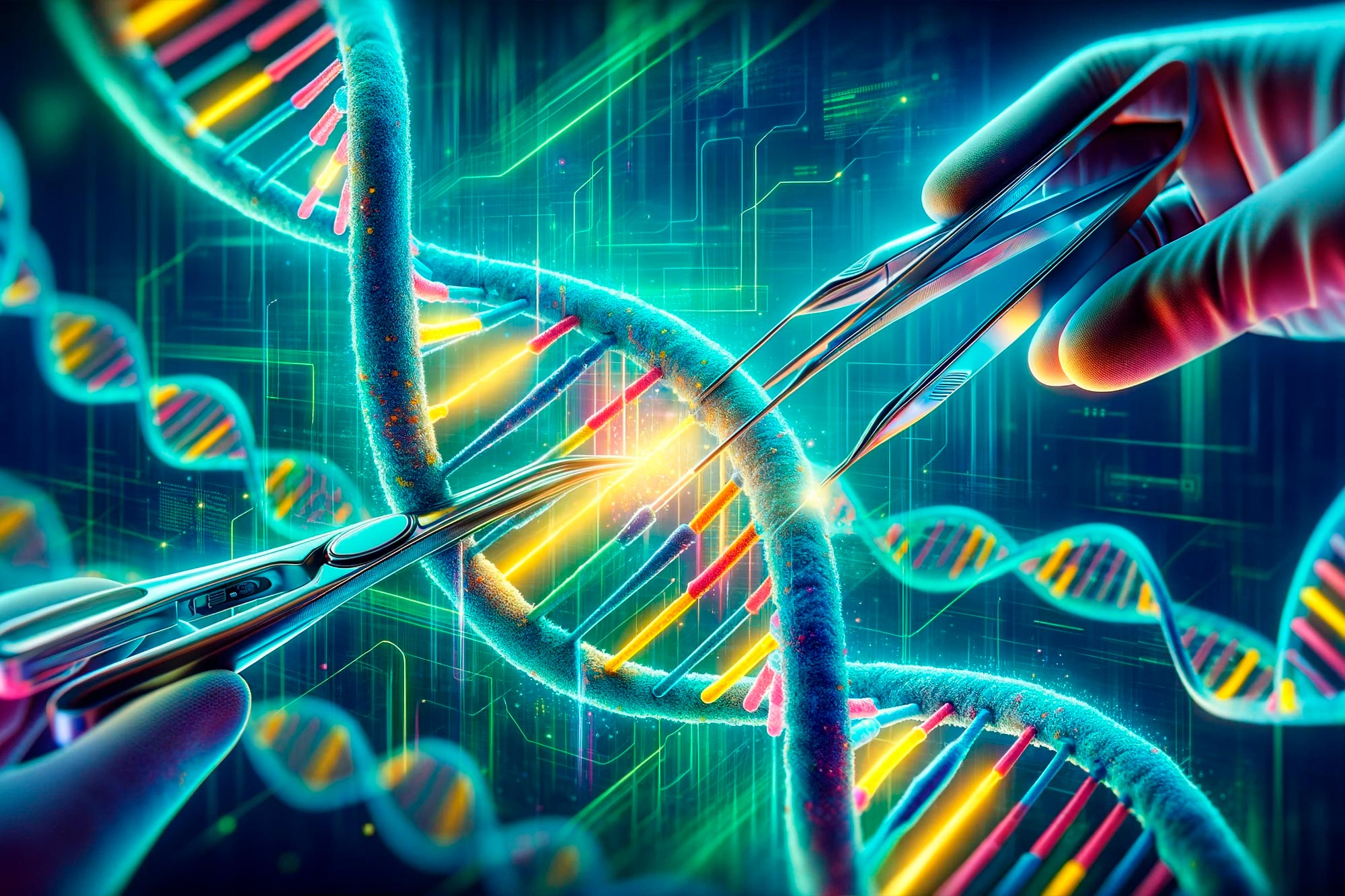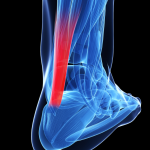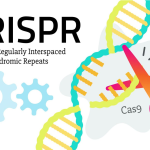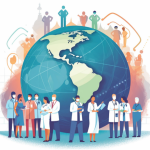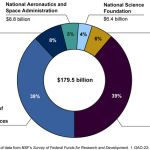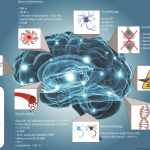Gene editing breakthroughs have redefined our understanding of genetics and medicine, particularly in the fight against genetic diseases. The advent of revolutionary techniques like base editing and prime editing stands as a testament to how far we’ve come, with CRISPR technology serving as the backbone of these advancements. This transformative power allows scientists to modify DNA with unprecedented precision, offering hope to millions suffering from previously untreatable conditions. As researchers like David Liu pave the way for new gene therapies, the potential to correct mutations is becoming a reality. Advances in this field not only hold promise for individual patients but also for reshaping the landscape of healthcare as we know it.
Recent advancements in the arena of genetic modification signal a new dawn for medicine, particularly with regard to inherited conditions. Innovative methodologies such as precise nucleotide alterations and advanced gene therapies provide critical tools for tackling complex genetic ailments. Through the utilization of these cutting-edge gene manipulation techniques, scientists aim to address the myriad challenges posed by genetic disorders. As the field progresses, it becomes increasingly clear that these technological strides are more than mere scientific curiosities; they represent pivotal steps toward meaningful medical solutions. With rigorous research and clinical applications, the future holds great promise for overcoming the barriers of genetic diseases.
The Revolutionary Impact of Gene Editing Breakthroughs
Gene editing breakthroughs have dramatically reshaped the landscape of genetic disease treatment, marking significant advancements that previously seemed like the stuff of science fiction. With the advent of technologies such as base editing and prime editing, researchers can now precisely alter DNA to address mutations that lead to various genetic disorders. These innovative techniques not only facilitate the correction of single nucleotide mutations but also promise to revolutionize our understanding and treatment of genetic diseases on a broader scale.
The first successful application of base editing in a clinical setting, as illustrated by Alyssa Tapley’s story, underscores the profound potential of these breakthroughs. This new wave of gene editing not only helps in treating diseases that were once considered untreatable, but it also represents a shift in how we approach genetic medicine. As scientists delve deeper into the capabilities of gene editing, including insights gained from CRISPR technology, the horizon for possible cures expands, making the future of healthcare brighter.
Understanding Base Editing: A New Era in Gene Therapy
Base editing, a groundbreaking development in gene editing, allows for exact alterations to DNA bases without the need for double-strand breaks. This technique specifically enables changes such as converting cytosine to thymine or vice versa, which are common mutations contributing to genetic ailments. Unlike traditional CRISPR approaches that indiscriminately cut DNA, base editing provides a more nuanced method of gene correction, significantly reducing the risk of unintended effects during the editing process.
The implications of base editing in gene therapy are monumental, especially for patients suffering from hereditary diseases. As clinical trials continue to unfold, we are witnessing firsthand the transformative potential of targeted gene corrections in real-time. Moreover, this technology holds the promise to not only treat existing conditions but potentially prevent them from manifesting in future generations, signifying a leap forward in the realm of genetic health.
Prime Editing: The Next Frontier in Genetic Research
The emergence of prime editing marks another critical milestone in the evolution of gene editing technologies. Often referred to as ‘the search-and-replace’ tool, prime editing allows researchers to specify the precise genetic edits they wish to make, addressing a wider array of genetic mutations than previous methods could achieve. This capability opens doors to correcting mutations that create genetic diseases caused by various types of DNA errors, including insertions or deletions, which were problematic for earlier techniques.
Prime editing is particularly exciting because it expands the toolkit available to scientists focused on gene therapy, providing solutions for disorders not adequately addressed by base editing or CRISPR technology. As research progresses, the application of prime editing in clinical environments could lead to groundbreaking therapies that offer hope for millions affected by genetic diseases, further demonstrating the revolutionary impact of these evolving technologies.
CRISPR Technology: The Foundation of Modern Genetic Editing
CRISPR technology has laid the groundwork for the modern genetic editing revolution, serving as the catalyst for the development of both base and prime editing techniques. Discovered in bacteria as a defense mechanism against viruses, CRISPR has evolved into a powerful tool for precise genetic modifications in a variety of organisms. This transformative technology has quickly been integrated into multiple clinical trials aiming to address an array of genetic diseases, showcasing its versatility and effectiveness.
As researchers continue to explore CRISPR’s untapped potential, we see an increasing number of applications that highlight its importance in medicine. The transition from basic understanding of CRISPR to its practical applications in gene therapy underlines the essence of basic science, demonstrating how foundational research can lead to life-saving innovations. With continued investment and focus on CRISPR research, the future appears promising for tackling some of humanity’s most pressing health issues.
The Role of Basic Science in Genetic Discoveries
Basic science plays a pivotal role in the progression of genetic technology, serving as the backbone for advancements in gene editing. The foundational research conducted over the years has paved the way for innovations like CRISPR, base editing, and prime editing. Scientists begin with a curiosity to understand complex biological processes, leading to significant discoveries that eventually translate into practical applications in medicine.
David Liu’s journey highlights the importance of maintaining a commitment to basic science, as it fuels the understanding necessary to develop breakthrough therapies. By prioritizing research that may not immediately seem applicable, we cultivate a rich environment for innovation that can tackle real-world challenges, including the treatment of genetic diseases. This ongoing commitment to exploration will continue to inspire future breakthroughs in the field of genetics.
Challenges and Considerations in Gene Editing
While gene editing technologies have ushered in a new era of therapeutic possibilities, they also present a set of challenges and ethical considerations that require thoughtful navigation. The precision and potential of base and prime editing technologies necessitate ongoing discussions regarding their use and implications in medicine. Devising ethical guidelines and regulatory frameworks becomes essential to ensure the safety and efficacy of treatments derived from these advanced methodologies.
One of the primary concerns is the potential for off-target effects, where unintended edits might occur in the genome, leading to unforeseen consequences. As the field progresses, comprehensive studies and transparency in clinical trials will be crucial in addressing these issues. By prioritizing the safety of patients and ensuring thorough evaluations, the scientific community can foster public trust and support for gene editing advancements.
The Future of Gene Therapy with Innovative Editing Techniques
The future of gene therapy is intricately linked to continued advancements in gene editing technologies such as base and prime editing. As researchers uncover new methodologies and refine existing ones, the potential to correct even the most challenging genetic mutations becomes a tangible reality. This evolution holds the promise of providing hope to patients diagnosed with rare and complex genetic disorders, ultimately transforming healthcare outcomes.
As more clinical trials and studies demonstrate the success of these advanced techniques, we may very well see a paradigm shift in how genetic diseases are understood and treated. Encouraging interdisciplinary collaboration and supporting innovation in this field will enhance the capacity to deploy these advanced therapies widely, making them accessible to all who need them, and fulfilling the promise of a healthier future for generations to come.
Patient Stories: Triumphs in Gene Editing
Real-life stories of patients who have benefitted from gene editing technologies illustrate the transformative power and potential of these techniques. Alyssa Tapley’s experience, marked by a remarkable recovery from T-cell leukemia due to base editing, serves as an inspiring beacon of hope amid the ongoing fight against genetic diseases. Through clinical trials, patients are witnessing the efficacy of these advanced therapies, which have the ability to drastically alter the course of their lives.
These personal narratives not only humanize the science behind gene editing but also emphasize the urgency and necessity for continued research and investment in these fields. As more patients share their stories of triumph over genetic diseases, the societal appetite for innovative treatments is likely to grow. This increasing awareness will motivate researchers and policymakers to prioritize gene editing initiatives more than ever.
The Integration of Technology and Medicine in Genetic Research
The intersection of technology and medicine is fundamentally changing the landscape of genetic research, with innovations such as CRISPR, base editing, and prime editing at the forefront. As computational tools and sophisticated algorithms enhance our understanding of genetic sequences, researchers are now better equipped to pinpoint targets for editing with unprecedented accuracy. This fusion of technology with biotechnology is reshaping medical approaches to treat genetic conditions.
Moreover, advancements in pressure-sensitive tools and automated systems are accelerating the pace at which gene therapies are developed and refined. As technology continues to evolve, the integration of digital and biological sciences will foster a collaborative environment that enables researchers to tackle complex diseases faster and more effectively. Investing in these technological applications will expedite the transition from laboratory successes to real-world medical solutions.
Frequently Asked Questions
What are the latest breakthroughs in gene editing technology?
Recent breakthroughs in gene editing technology include advancements such as base editing and prime editing, which are more precise than traditional CRISPR technology. Base editing allows scientists to make specific changes to DNA without cutting the double helix, while prime editing acts like a word processor for DNA, enabling complex edits in a more targeted manner.
How does base editing differ from traditional CRISPR technology?
Base editing is a significant advancement over traditional CRISPR technology as it precisely alters specific nucleotide bases—A, T, C, or G—rather than cutting the entire DNA strand. This technique targets common mutations that cause genetic diseases, offering a safer alternative to gene disruption associated with older CRISPR methods.
What impact does gene therapy have on genetic diseases?
Gene therapy, enhanced by breakthroughs in gene editing like base editing and prime editing, has the potential to correct mutations at the molecular level, which could lead to cures for various genetic diseases. This innovative approach targets the genetic root of diseases, improving patient outcomes significantly.
Can prime editing provide solutions for all types of genetic mutations?
While prime editing is designed to address a broader range of genetic mutations than previous gene editing techniques, including base editing, it is still being researched. It effectively corrects single-letter substitutions and can insert or delete DNA sequences, making it a versatile tool in the fight against genetic diseases.
What are the clinical applications of gene editing breakthroughs?
Gene editing breakthroughs, including base editing and prime editing, are currently being applied in clinical trials to treat various genetic diseases. These approaches aim to correct genetic mutations in patients, with some trials already showing promising results in alleviating symptoms and improving patients’ quality of life.
What role does basic science play in gene editing advancements?
Basic science is crucial in gene editing advancements as it provides the foundational understanding necessary to develop technologies like CRISPR, base editing, and prime editing. Curiosity-driven research has led to significant insights into DNA mechanics, ultimately enabling the innovative gene editing breakthroughs we see today.
What ethical considerations surround gene editing breakthroughs?
Gene editing breakthroughs raise several ethical considerations, including the risk of unintended consequences in genetic modifications, the potential for germline editing, and concerns about accessibility of these technologies. Ongoing dialogue in the scientific community aims to address these issues while promoting safe and responsible research.
How are gene editing technologies transforming cancer treatment?
Gene editing technologies, particularly base editing, have shown promise in transforming cancer treatment by directly correcting mutations responsible for cancer progression. Clinical trials, like the one that helped Alyssa Tapley, illustrate how these advancements are offering new hope to patients with previously untreatable conditions.
What future prospects do gene editing breakthroughs hold for medicine?
The future of gene editing breakthroughs in medicine is incredibly promising, with the potential to eradicate genetic diseases, personalize cancer therapies, and revolutionize treatments for various conditions. Continued research in this field could lead to widespread applications of these advanced technologies, significantly enhancing patient care.
| Key Point | Details |
|---|---|
| Patient Highlight | Alyssa Tapley, a 16-year-old, was cured of T-cell leukemia through a novel gene-editing technology called base editing. |
| Technology Overview | Base editing and prime editing are advanced gene-editing technologies developed to correct genetic mutations more precisely than traditional CRISPR methods. |
| Clinical Impact | As of now, there are at least 18 clinical trials using base or prime editing, with several patients already treated. |
| Scientific Foundation | CRISPR technology has roots in basic science, initially studied in bacteria for their immune responses to viruses. |
| Future Perspectives | David Liu emphasizes the importance of collaboration between higher education and federal institutions to foster innovation in gene editing. |
Summary
Gene editing breakthroughs mark a pivotal advancement in modern medicine, drastically improving treatment options for genetic diseases. The development of base and prime editing technologies holds promise not only in curing diseases but also in redefining how we address genetic disorders. With successful cases such as Alyssa Tapley, researchers like David Liu are paving the way for future innovations. While we approach the possibility of cures, it’s crucial to maintain a strong partnership between academia and government to support the next generation of scientists. The journey of gene editing from basic science to practical applications shows the incredible potential of genomics in enhancing human health.
